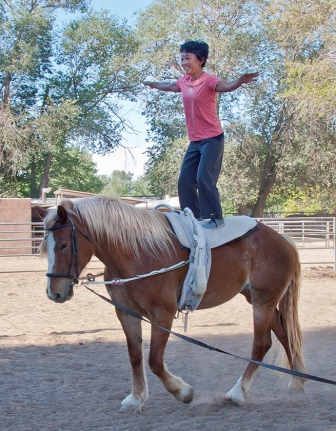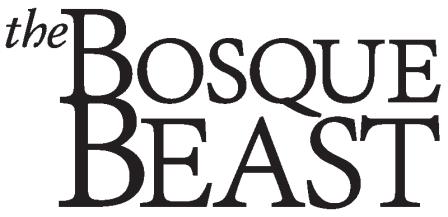Needing horse sense

No one likes to admit it, but maybe we haven’t tried harder to communicate with animals because we don’t want to hear what they might say. At least I don’t, now that I’m horsing around with a new hobby.
Like many city folk, I have long harbored the secret fantasy of learning to ride a horse. It’s much like when I moved to Hawaii, and had a vision of myself riding waves. Congenitally accident-prone, I endured face plants and ridicule before learning to catch waves—though that’s not quite what the other surfers called it.
That was years ago, and now I am sensibly middle-aged. So I congratulated myself for realizing immediately that it was too late for me to get on a horse. I opted instead for something with a gentler learning curve—something like equestrian vaulting, gymnastics on a horse.
Look, it seemed a bit like surfing. Without machines, grease, or manuals, you harness speed with only the freeing force of nature. The vaulters assured me that no prior knowledge of horseback riding would be needed.
This turned out to be not altogether true, as I learned the first time I sat on a horse at a trot—backward. A horse is not much like a surfboard, since it is not much like a board. The horse is more like a wave without a surfboard, one that will stop abruptly for a long pee.
Not all horses are the same, either. The star Percheron used in competition by Albuquerque Vaulters, John Boy Joe, is as wide as a sofa, with the nice smooth ride that makes him such a pleasure to fall off of. Whereas the Belgian/Haflinger named Georgia has a kick to her hips that is like standing on golf balls, arms akimbo, with a smile.
Yes, that’s right—stand. The reason people take up vaulting at a young age is because they are not yet troubled by adult certainties, like Newton’s laws of motion. When you tell a 10-year-old to stand on a horse, she gets up. When you tell a 52-year-old of the same height and intelligence to stand on a horse, mental obstacles intrude, like the idea that you never do see a cowboy standing on his horse.
In my slow advance from gripping the handles in a squat, up through the evolutionary stages of man, I have been helped in technique by a chorus of children shouting out helpful hints on how to do it right. I’m sure there is a valuable lesson in being tutored by children. At least, it seems edifying for them.
The youngsters say nothing of my progress; their moms, being nearly as young, smile politely. I’m glad not to hear what the horses have to say when I come running up and, instead of the flying leap of most 8-year-olds onto their backs, dangle helplessly until someone pushes my arthritic knee over the other side. Vaulting horses are trained to maintain their steady motion around the ring and never laugh.
I only know that, when vaulting class is over, and I hop on my bike for the ride home, it’s with a great devilish laugh that I blow past the equestrians, their moms, and the wee ones on training wheels.
Keiko Ohnuma
Editor & Publisher
